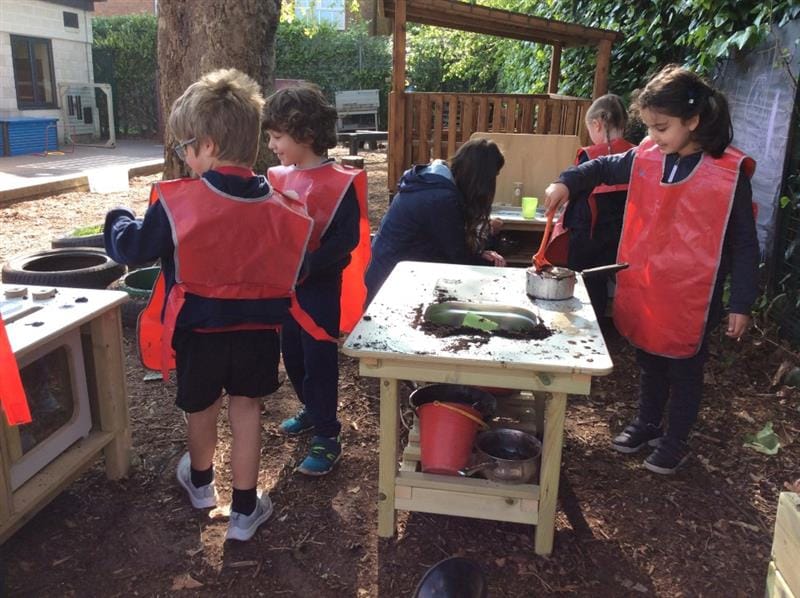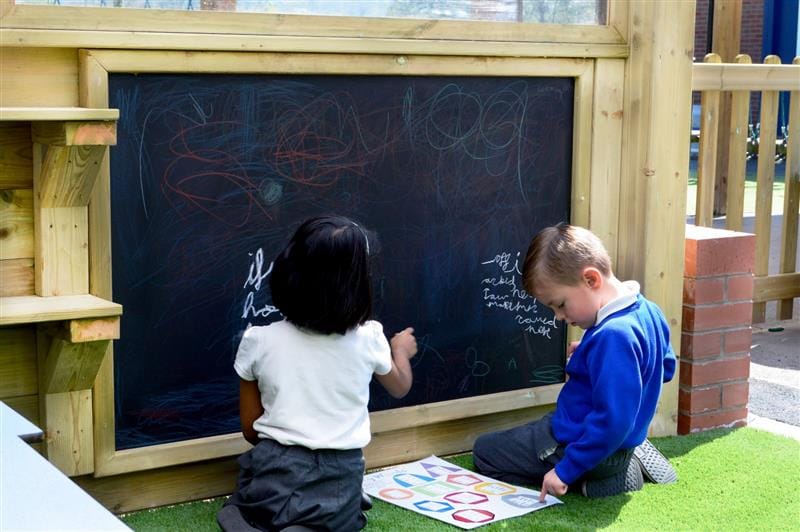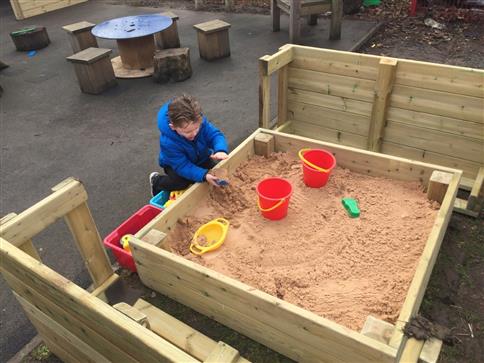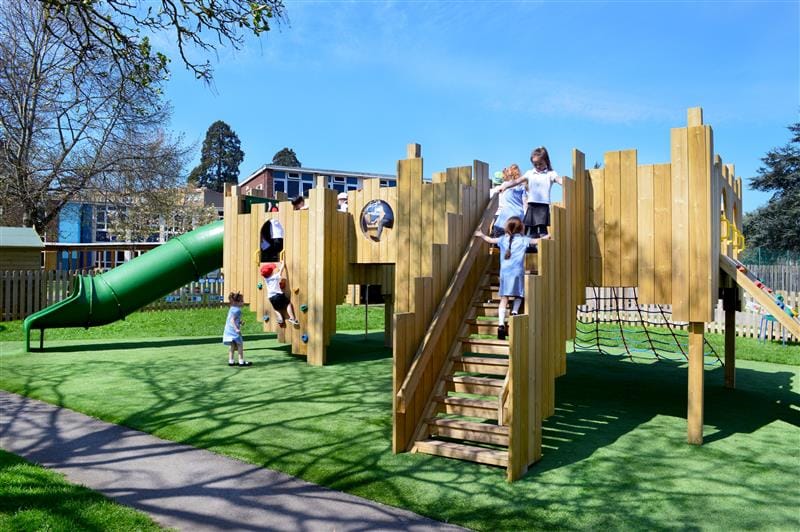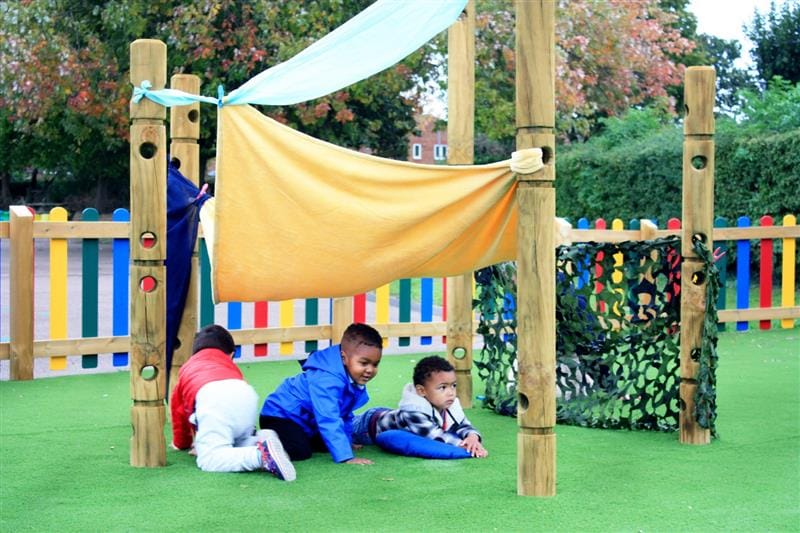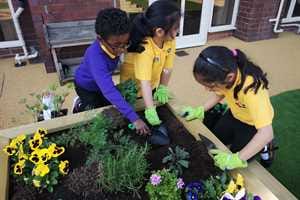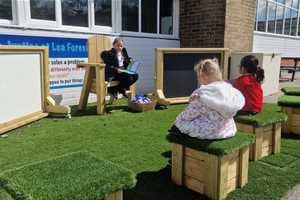
Outdoor Learning and Play
How to incorporate the outdoors into creative writing to improve children's literacy skills!
When learning outside, within nature, children can be calmed, soothed, excited or inspired.
Outdoor lessons which encourage children to observe their natural surroundings, have the power to spark children’s interests, ideas and creative thoughts.
The multi-sensory aspect of the natural environment promotes imagination and original thought which cannot always be achieved by work-book based activities in the indoor environment.
If we want pupils to enjoy and understand language and to make use of complex vocabulary, they need to be given time to observe and to make full use of all of their senses in order to fully capture a subject.
This blog focuses on how to improve children's creative writing through play and activity.
Notebooks for Budding Nature Detectives
In my experience, children love their own special notebook which they can take with them during short nature walks outside. Notebooks can be used to record anything of interest and can be particularly useful when generating interesting adjectives to describe appearance, colour and texture of objects.
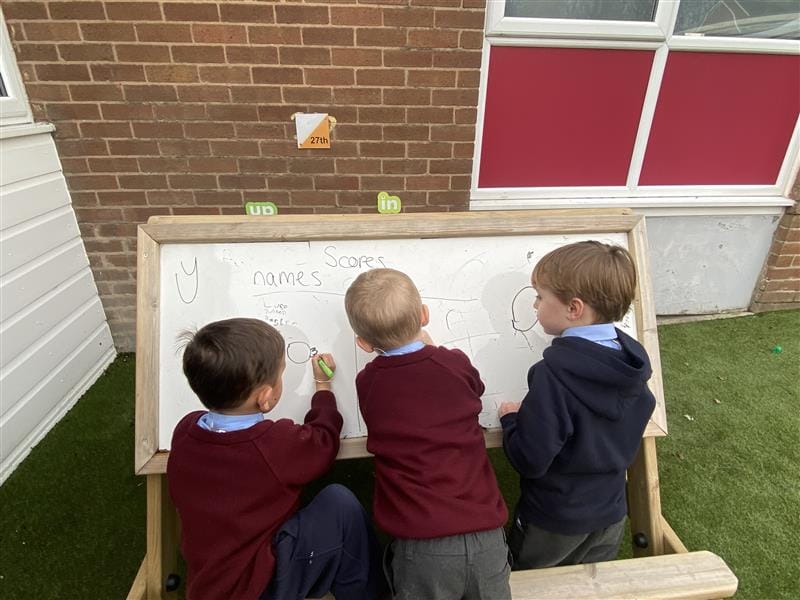
Armed with their trusty notebook, pupils train themselves to be accurate observers, to look closely, listen attentively and to study an object from all angles.
For some pupils a notebook removes the pressure they feel when writing final pieces of work in their class books. Children may be able to write more freely if they are not worried about spelling errors and neatness which can be corrected when producing a final draft.
A notebook allows pupils to take some writing risks, to change ideas and improve upon meaning. Teachers can encourage pupils to build on their ideas by questioning, showing enthusiasm and offering different perspectives or challenges.
Using a notebook encourages children to see themselves as writers and allows them to make decisions throughout the writing process.
Spaces to Write in the School Environment
School grounds can be developed into a wonderful place to support creative writing. When thinking about your outdoor environment, try to plan several areas/stopping points where children of different age groups and abilities can observe and write.
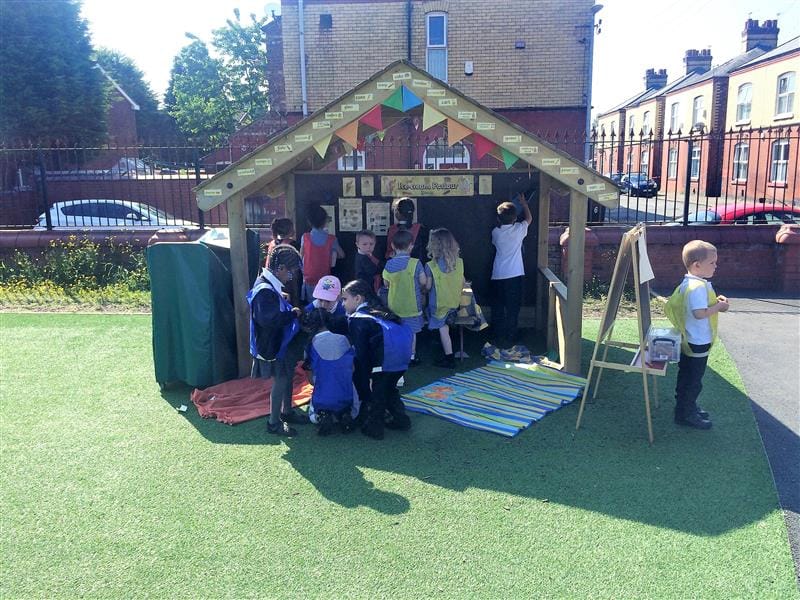
Writing stations could be given names such as The Creatures Cabin – Playhouse or The Great Hill –Playground Mound and some may even be suggested by the children themselves.
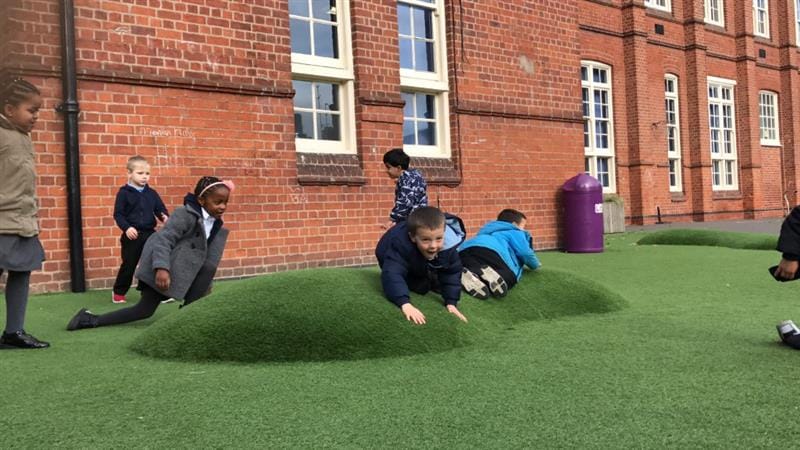
Hunting for Minibeasts
A Bug Hotel, Planter Bench, wall or hedge offer perfect places for small creatures to live. Children could conduct monthly minibeast hunts, creating factfiles for different creatures found at different locations.
After careful observation using magnifiers and bug viewers pupils can picture themselves as a particular minibeast and perhaps write a diary entry. Pupils could use their imaginations to create a bizarre minibeast occurrence such as a giant spider, a luminous ladybird that can be seen for miles around or a snail that leaves real golden trails! Pupils could see themselves as important reporters, writing a newspaper article about the strange case.
A particular minibeast could inspire a collaborative class poem. After observing a specific minibeast for example a snail, together as a class you decide upon a few key features to focus on which become the spine of the poem such as tentacles, shell, head and body.
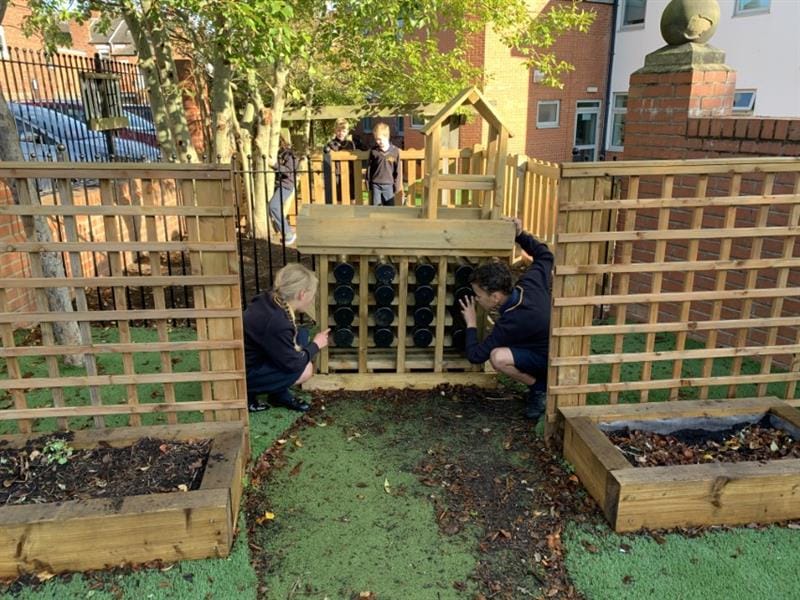
Descriptive ideas can be generated through class discussion and composed on a Giant Whiteboard.
A gluestick body that shimmers in the sun.
Tentacles outstretched and pointed tail.
Safe in the dark of her twisted shell
Head dreaming of where she can go.
Younger children could write a simple picture book about the life and adventures of a particular minibeast inspired by The Very Hungry Caterpillar by Eric Carle.
Tree Gazing
Most outdoor areas will allow children to study trees. Outdoor classrooms located near trees or a Tree Seat will provide the ideal writing spot for children to study this unique lifeform that provides food, shelter and beauty to our world. Pupils will enjoy writing about trees as though they are human by using active verbs and personification, generating phrases such as: Stretching out their spindly arms, Decorating their heads with tiny nests.
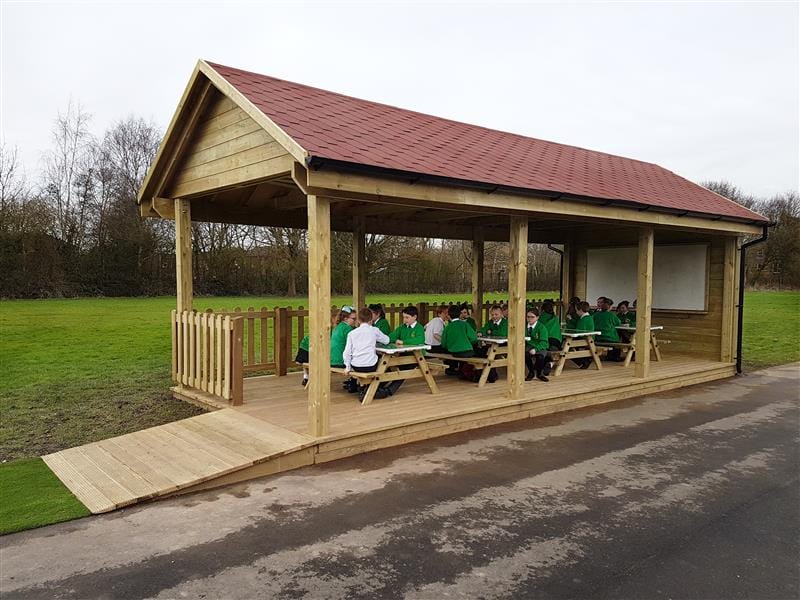
Pupils can begin to imagine what a particular tree has observed over its lifetime. Writing as the tree pupils can talk about the changing seasons, nearby views, various playtime games, annual school activities and local wildlife.
Trees can often provide a focal point for an imaginative story, for example the characters gather and build their ultimate treehouse, a character lives inside a tree or the life cycle of a tree can be explored.

Pond Life
A school pond is a fantastic place for children to visit throughout the year to observe seasonal change. Stories and poems can be written of the fictional lives of the characters pupils find at a pond such as frogs, water snails, tadpoles and dragonflies. Pupils can be encouraged to think about the size, shape, colour, noise and special features of the species they discover.
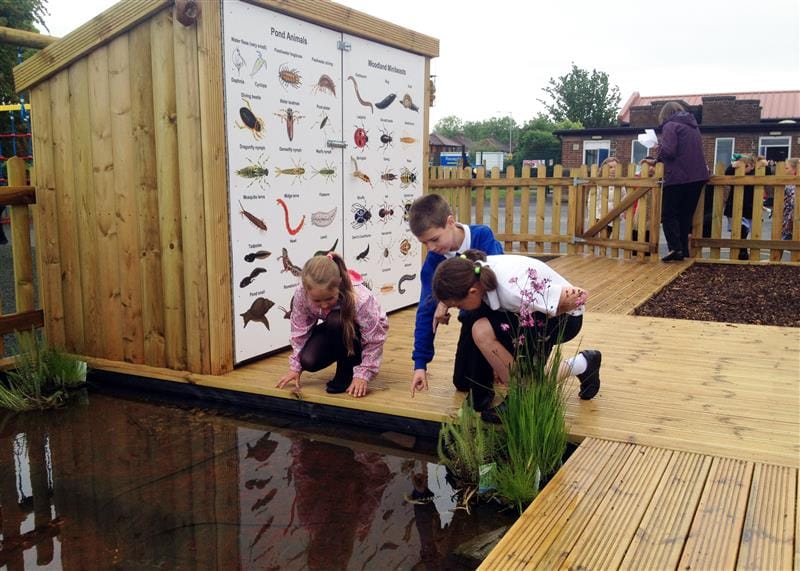
Budding authors could write a mystery/spooky/adventure tale about what lurks beneath the ponds surface, perhaps observing the pond on a freezing cold day and creating a tense atmosphere when describing ice cracking and twigs snapping. Observing frogspawn in detail and describing what it looks like may inspire pupils to write a science fiction/ spooky story about metamorphosis/life forms.
Listen for the Bird Song
An Outdoor Classroom or a Learning Den are super spots for children to listen to the sounds around them. Children can use binoculars to search for evidence of birds in the area. Pupils can make their own word banks to describe the appearance of birds, how they are gathered, how they move and what they remind them of. Children can turn their observations into short poems which can be collated for a class bird anthology.

Pupils can picture themselves as a bird, describing how it feels and what they can see as they take flight. Children could imagine that they are a bird out hunting and describe the types of food they bring back to the nest. Perhaps they are a homing pigeon who finds a note attached to its ankle with an important message on it…
Product Spotlight
Smell the Flowers
A school garden/planting area can stimulate children’s senses and inspire thoughtful creative writing. Pupils can design and write about their own, newly created flower species. They may write a poem about what certain types of flowers remind them of or they could take on the role of a flower and write a conversation between two different species. What would a tall sunflower say to a tiny daisy?
Observation and Discovery
In different seasons and on different days children will make their own observations about natural phenomena during outdoor learning. The wind will seem to play a harp, the dark clouds will swirl like shadows in the night and the autumn leaves will crack and crunch like a blazing fire.
.jpg)
Pupils will enjoy going on scavenger hunts to find natural objects of every colour and texture. Older children will be able to use simile and metaphor to describe objects as something else; cracked earth can be as dry as sandpaper and veins in leaves can appear skeletal.
Observing the sky and the clouds during different seasons and at different times during the day will inspire writing as children describe the appearance of the shapes they can see and imagine their own cloud-like world!
.jpg)
Inspired by ‘Stick Man’ by Julia Donaldson, children could make their own stick woman, child, animal or alien character. Pupils can be encouraged to collect natural materials such as sticks, pebbles, seeds, leaves and flowers which can be added to with string, tape and pipe cleaners. Photographs and videos can be taken with the new character at different locations in the outdoor environment. Pupils can then write their own story books focussing on elements such as description, action, tension or use of dialogue.
.jpg)
Enter the Castle
A Play Castle or a Treehouse has amazing potential for stretching children’s imagination and ideas. Older children can report on ghostly sightings at the castle. They can imagine what the ghosts look like and where they may dwell. Pupils can think about what the castle walls would say if they could talk which would link well to cross-curricular history topics and learning about historical figures. Classes could write letters from those who have stayed or been held in the castle, which helps children to learn about the past and empathise with people.
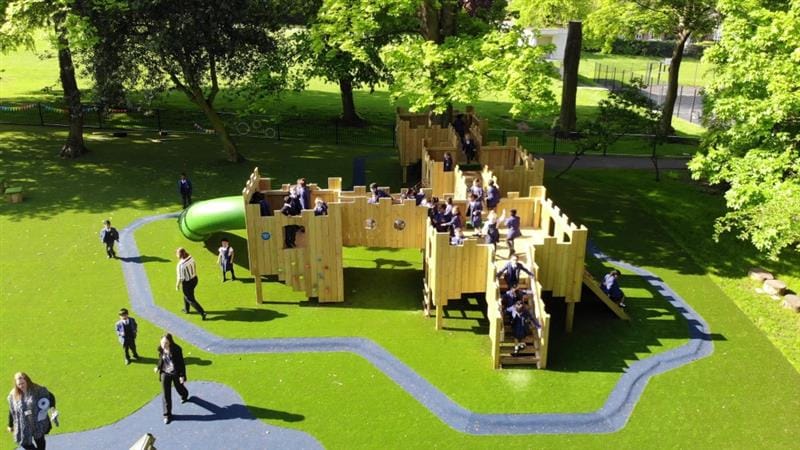
A Play Castle can be a great stimulus when learning about myths and legends. Pupils can use drama to retell legends, considering costumes and sound effects, building their literacy skills in an engaging way. Comic strips and storyboards can be composed of known legends or new, modern versions.
Designing a Den
Den Making Posts not only support children’s physical development, they are also a fantastic resource for igniting imaginations and supporting children's literacy skills. After building their den, pupils may be inspired to write their own story about a camping trip. There could be a problem in the story which the characters have to overcome such as a thunderstorm, a lost animal or a mysterious object could fall to the ground just outside the den.
Mark Making at the Sand Box
Younger children will enjoy using sticks and other tools to practise writing messages directly into the sand whilst exploring the Sand Box. Older classes can find a message in a bottle, hidden in the sand box which can inspire them to write and send a reply. One day the sand box could be mysteriously filled with a selection of litter. Some of the objects may inspire children to create their own stories about where particular items could have come from. Pupils may be inspired to write stories and articles persuading others not to litter.
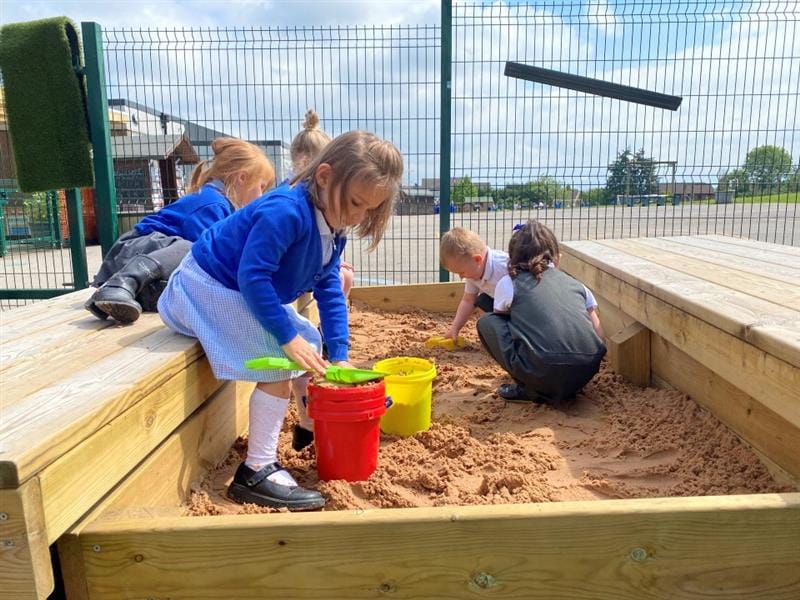
Spaces to Gather and Share
A Storytelling Circle provides a quiet space in the school grounds for children to gather and share the work they have been doing. Class story books and anthologies could be accessible in the outdoor environment for others to pick up and read, giving pupils a real sense of becoming a published author. A Performance Stage provides the ideal location to read aloud poems and act out short stories with intonation and expression, holding the interest of the audience.
.jpg)
At times, pupils can have trouble getting started with writing, they may lack inspiration and struggle with description and style. Providing opportunities for outdoor writing offers real experiences which can interest children, stimulate their senses and make them feel more relaxed. By allowing pupils to learn outdoors they develop their own thoughts and feelings, after experiencing hands-on learning.

Pupils can spend six hours at school each day and spend maybe 1 hour of that time outside. Are we making full use of a wonderful resource right outside our classroom door? When practicing writing outdoors, pupils can improve their descriptive writing skills or immerse themselves in a magical, make-believe world.
Hopefully this blog will inspire you to consider your own outdoor setting and how you can inspire creative writing for children.

